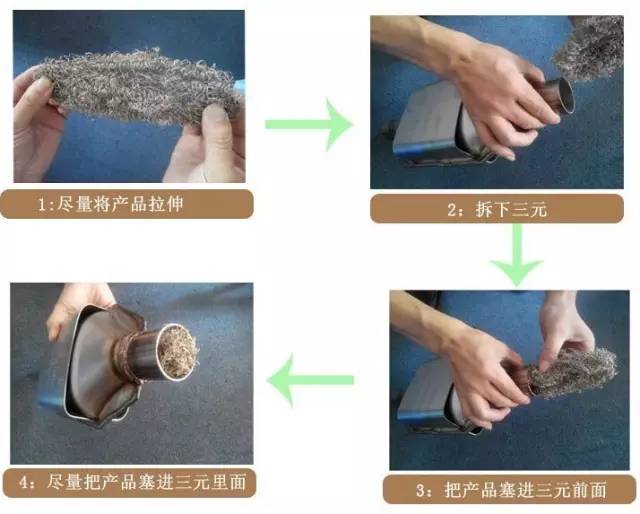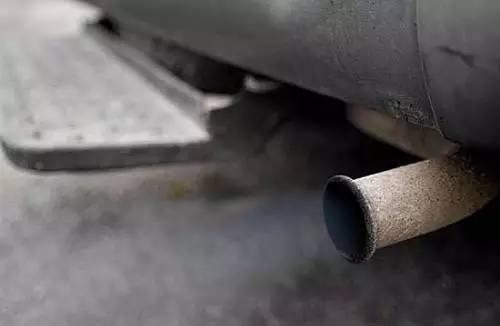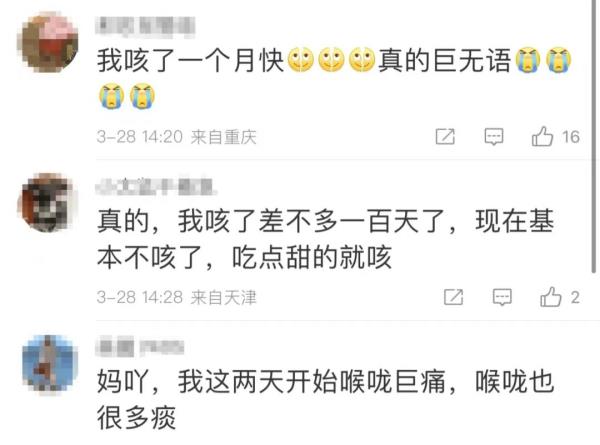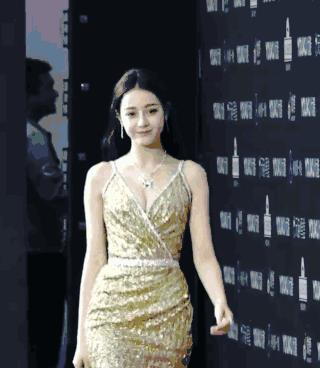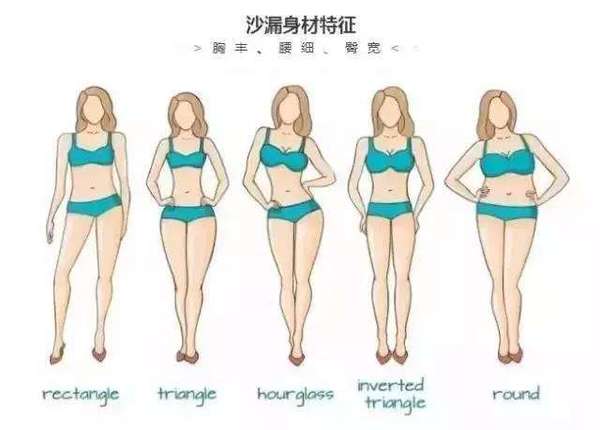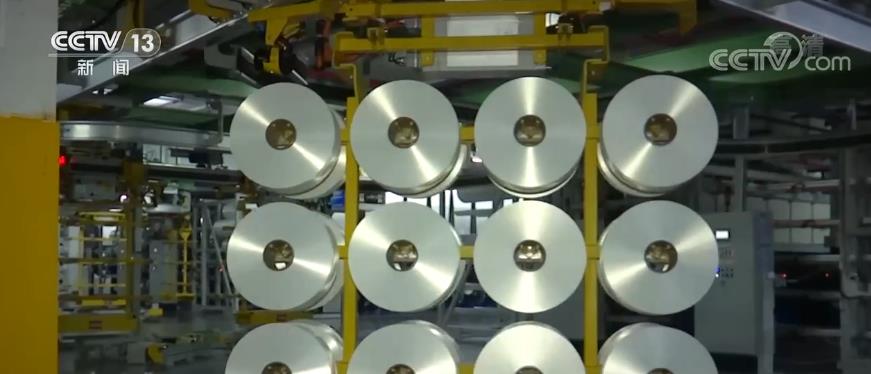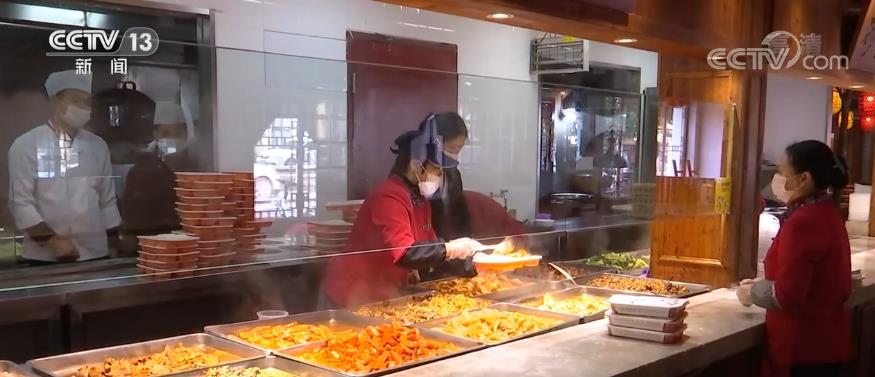Lianyungang statistics bureau
(10 March 2002)
2001The year of 2008 is the beginning of the implementation of the Tenth Five-Year Plan, and it is also a year in which the national economy and social undertakings of our city maintain healthy development and present positive changes. Under the correct leadership of the Municipal Party Committee and the Municipal Government, the people of the whole city worked hard in unity, firmly established a strong sense of Lianyungang, and continued to implement the three main strategies of "prospering the city through opening up, prospering the city through science and education, and prospering the city through Hong Kong" around the development theme of "rapidly rising, enriching the people and strengthening the city", further promoting the healthy and stable development of the national economy and social undertakings of the whole city. According to preliminary statistics, the annual GDP reached 31.605 billion yuan, an increase of 8.2% over the previous year at comparable prices. Among them, the added value of the primary industry was 7.783 billion yuan, an increase of 6.0%; The added value of the secondary industry was 13.727 billion yuan, an increase of 9.9%; The added value of tertiary industry was 10.095 billion yuan, up by 7.8%. The per capita GDP was 6,906 yuan, an increase of 6.8%. The tertiary industrial structure was adjusted from 25.3:43.2:31.5 in the previous year to 24.6:43.4:32.0.
The main difficulties and problems in economic and social development are: the comprehensive economic strength is not strong enough, the speed of economic development is still not fast enough, the contradiction of industrial structure is still prominent, some enterprises have not stepped out of the predicament, the social employment pressure is increasing, the income level of residents is not high, and the local financial pressure is increasing.
I. Agriculture, forestry, animal husbandry and fishery
Focusing on the goal of increasing agricultural efficiency, increasing farmers’ income and stabilizing rural areas, the city is market-oriented, vigorously promoting the structural adjustment of agriculture and rural economy, and solidly deepening various rural reforms. Agriculture and rural economy continue to maintain a good development momentum. The total output value of agriculture, forestry, animal husbandry and fishery reached 14.905 billion yuan, an increase of 6.1% over the previous year. Among them, the agricultural output value was 8.991 billion yuan, the animal husbandry output value was 2.419 billion yuan, and the fishery output value was 3.275 billion yuan, all of which increased in different degrees compared with the previous year.
The output of agricultural products increased in an all-round way, and the grain economy structure was further optimized. The city overcame the adverse factors such as severe drought and low prices of agricultural products, vigorously adjusted the internal structure of agriculture, and agricultural production showed obvious recovery growth. The ratio of grain to economy has been adjusted to 5.3: 4.7 in development. With the area reduced, the total grain output reached 2,263,400 tons, an increase of 9.3%. 50,200 tons of cotton, an increase of 83.8%; 167,800 tons of oil, an increase of 13.0%; 185,000 tons of pork, cattle, sheep and poultry meat, an increase of 3.1%; The output of aquatic products was 377,100 tons, an increase of 8.4%.
The pace of agricultural industrialization has been accelerated, and the level of agricultural science and technology has been continuously improved. There are 82 agricultural enterprises with annual sales income exceeding 10 million yuan in the city, including 30 leading enterprises with annual sales income exceeding 50 million yuan, forming 51 characteristic towns and creating 37 agricultural brands. In the whole year, there were 33 new spark projects at or above the provincial level, and 142 new crop varieties were introduced. The comprehensive level of agricultural mechanization in the city reached 76%.
The reform of rural taxes and fees was implemented smoothly and achieved phased results. The per capita burden of farmers decreased from 206.4 yuan to 98.84 yuan, and the burden reduction rate reached 50.7%.
II. Industry and Construction Industry
The industrial economy continued to maintain steady growth. In 2001, the industrial added value reached 11.339 billion yuan, an increase of 9.2% over the previous year. All state-owned and non-state-owned industrial enterprises with an annual sales income of more than 5 million yuan achieved a total output value of 24.634 billion yuan, an increase of 13.5%. From the perspective of light and heavy industry, light industry increased by 14.7% and heavy industry increased by 12.1%. From the perspective of economic types, state-owned enterprises and joint-stock enterprises grew steadily, collective industries and foreign-funded enterprises grew rapidly, and rural industries grew rapidly, accounting for a high proportion of the city’s industries. The total output value of state-owned industries in the city was 4.600 billion yuan, an increase of 5.9%; The total output value of collective industry was 7.979 billion yuan, an increase of 13.7%; The total output value of foreign-funded enterprises was 5.316 billion yuan, up by 14.0%, and the total output value of joint-stock (including cooperative system) industry was 4.744 billion yuan, up by 10.6%. The total industrial output value in rural areas reached 10.412 billion yuan, up 20.6% over the previous year, accounting for 42.3% of the total industrial output value, up 2.6 percentage points over the previous year.
New progress has been made in industrial restructuring, and the overall economic benefits have been improved. The pace of enterprise restructuring has been accelerated, and at the same time, the restructuring of difficult enterprises has been intensified, which has promoted the steady improvement of industrial economic benefits in the city. The city’s restructured assets reached 2.4 billion yuan, 61% of small and medium-sized enterprises withdrew from state-owned and collective capital, and the restructuring of large and medium-sized state-owned enterprises reached 85%. In the whole year, all state-owned and non-state-owned industrial enterprises with annual sales income of more than 5 million yuan completed product sales income of 22.18 billion yuan, an increase of 10.9% over the previous year; The profit-making tax was 1.841 billion yuan, an increase of 8.7%; The industrial comprehensive economic benefit index was 124.2%, 0.2 percentage points higher than the previous year.
Pillar industries and key backbone enterprises have maintained a good development trend. The five pillar industries, such as chemical industry, building materials, textile, medicine and food, achieved product sales revenue of 15.346 billion yuan, up by 10.0% over the previous year, accounting for 69.2% of the city’s industrial sales revenue; The profit tax was 1.304 billion yuan, up 4.7% from the previous year, accounting for 70.8% of the city’s industrial profit tax. The sales revenue of 22 key enterprises (groups) in the city was 5.423 billion yuan, an increase of 11.0% over the previous year; The profit-making tax was 922 million yuan, an increase of 6.1% over the previous year.
[FX:PAGE]
The construction industry has a good momentum of development. The added value of the construction industry was 2.389 billion yuan, an increase of 13.6%. The construction output value of the construction industry was 5.944 billion yuan, an increase of 27.5% over the previous year. The number of construction units in the whole year was 2,389, of which 1,883 were newly started this year. The number of unit projects completed was 1906, of which 787 were excellent, with an excellent rate of 41.3%. The building construction area was 7.84 million square meters, and the completed area was 5.835 million square meters, up 32.7% and 25.0% respectively over the previous year.
III. Investment in fixed assets
The scale of investment has expanded and the growth trend is obvious. Seize the favorable opportunity for the country to expand domestic demand, continue to expand investment, and complete the investment in fixed assets of the whole society of 15.182 billion yuan, an increase of 18.8% over the previous year. Among them, the investment of urban collectives (including real estate) was 10.309 billion yuan, an increase of 21.7%. From the perspective of investment management channels, capital construction investment continued to maintain rapid growth, while other investments increased significantly. The investment in capital construction was 6.986 billion yuan, an increase of 21.6% over the previous year; The investment in renovation was 1.718 billion yuan, an increase of 21.7%; Completed real estate investment of 966 million yuan, up by 46.5%; Rural investment reached 4.20 billion yuan, an increase of 35.1%.
Construction of key projects is progressing smoothly. The investment in 36 key projects in the city was 5.107 billion yuan, accounting for 54.5% of the investment in infrastructure modification in the city. Lianyungang Phase I of Xulian Expressway was completed and opened to traffic, Fenguan Expressway completed the bridge and pavement foundation project, Tianwan Nuclear Power Station No.1 nuclear island was capped, Liang Shi River Reservoir’s new flood gate project was put into use, the first ultra-deep scientific exploration well in Asia continent was drilled, the first aid center building was completed, a number of key educational projects such as Xinhai High School and Teaching and Research Center were completed and put into use, and the dredging project of 70,000-ton waterway in the port was started, and the national and provincial roads of 110km, Chaoyang East Road and Yuzhou were completed.
The investment in fixed assets has achieved remarkable results. In the whole year, 610 capital construction and renovation projects were put into production, with the completion and production rate of 78.3%. Fixed assets increased by 4.421 billion yuan, and the delivery and utilization rate of fixed assets was 50.8%.
Four, transportation and post and telecommunications industry
Transportation production grew steadily, and the post and telecommunications industry continued to develop rapidly. In the whole year, the added value of transportation industry was 1.99 billion yuan, and that of post and telecommunications industry was 496 million yuan, up by 3.9% and 16.0% respectively over the previous year. In the whole year, the total number of road passengers in the whole society was 49.36 million, an increase of 2.4% over the previous year; The road freight volume of the whole society was 29.13 million tons, an increase of 6.4%. The number of civil aviation passengers was 39,742, down by 15.2%.
The throughput of Lianyungang Port made a historic breakthrough, with an annual throughput of 30.58 million tons, up by 12.9% over the previous year, of which the foreign trade throughput was 18.77 million tons, up by 29.1%. The port container throughput was 157,500 TEUs, an increase of 31.2%. It realized the first time since 1994 that there was no operating loss in that year.
The comprehensive ability of postal communication has been further enhanced. The total amount of postal and telecommunications services was 1.195 billion yuan, an increase of 24.9% over the previous year. At the end of the year, the total capacity of telephone exchanges was 774,000, with an increase of 105,000. The number of telephone users in the city reached 870,500, up by 33%. Among them, there were 541,700 fixed-line telephone users, an increase of 19.7%; Mobile phone users reached 328,800, an increase of 62.8%; The number of Internet users reached 86,700, an increase of 1.98 times.
V. Domestic trade and market prices
The consumer goods market grew steadily. The total retail sales of social consumer goods reached 10.291 billion yuan, an increase of 7.7% over the previous year. Among them, urban retail sales increased by 9.2% and rural retail sales increased by 3.6%. By industry, the retail sales of wholesale and retail trade reached 7.851 billion yuan, up by 11.0%. The catering industry was 1.086 billion yuan, an increase of 10.4%; Other industries reached 1.353 billion yuan, down 9.8%.
New progress has been made in market construction. The annual turnover of various markets was 20.8 billion yuan, an increase of 2.3% over the previous year. By the end of the year, 356 commodity trading markets were established, of which 32 had turnover exceeding 100 million yuan.
The economic benefits of wholesale and retail trading enterprises above designated size have improved, but they are still not ideal. The total profit of wholesale and retail trading enterprises above designated size in the city was 68.42 million yuan, up by 1.8% over the previous year, and the net sales income was 4.595 billion yuan, down by 8.5%.
The consumer price level increased slightly, and the retail price level of commodities continued to fall. The total retail price index of commodities dropped by 1.2% compared with the previous year, the total consumer price index rose by 0.7%, the non-food price index rose by 0.9%, and the service price index rose by 7.1%. In terms of items, the price indexes of grain, oil, vegetables, clothing, household equipment, medical care, transportation and communication all showed a downward trend, and the price indexes rose mainly in education, eggs, fresh fruits and meat and poultry.
VI. Foreign Economy
Facing the complicated situation of ups and downs at home and abroad and the new situation of China’s accession to the World Trade Organization, the city has made every effort to expand its opening up around the main strategy of "opening up and revitalizing the city", and its export-oriented economy has achieved good results.
[FX:PAGE]
Foreign trade continued to grow substantially. The total import and export volume was 680.78 million US dollars, an increase of 40.3% over the previous year. Among them, the export was 487.68 million US dollars, an increase of 25.6%. Commodities have been exported to 120 countries and regions, an increase of 10 countries and regions over the previous year. Among them, it was exported to 34 countries and regions in Asia, with an export value of 364.81 million US dollars, an increase of 38.2%, accounting for 74.8% of the city’s exports.
New achievements have been made in utilizing foreign capital. There are 93 newly signed foreign capital utilization projects in the city, with the agreed foreign capital utilization amount of 101.13 million US dollars and the actually utilized foreign capital of 194.95 million US dollars, an increase of 12.3% over the previous year. Among them, foreign direct investment was 57.81 million US dollars, an increase of 21.2%. At the end of the year, there were 715 foreign-funded enterprises in the city, an increase of 25 compared with the end of last year.
Foreign economic and technological cooperation continued to maintain rapid growth. In 2001, foreign labor service contracts were newly signed at US$ 84.16 million, up by 10.0% over the previous year. The turnover was 84.72 million US dollars, an increase of 11.0%. At the end of the period, there were 7,686 people living abroad, an increase of 20% over the previous year.
New progress has been made in domestic economic and technological cooperation. In 2001, 562 new economic and technical cooperation projects were launched, an increase of 7.4% over the previous year. 516 projects were put into operation, an increase of 4.6%. 936 million yuan of inline funds were introduced, an increase of 17.7% over the previous year. A number of key inline projects, such as Wangrun Meat Processing, Longhai Pedestrian Street, Xinglong Ceramic Market and MDF, have been implemented or put into production.
New breakthroughs have been made in the construction of development zones. The annual GDP reached 2.8 billion yuan, an increase of 19.1% over the previous year. The total industrial output value was 7.52 billion yuan, an increase of 20.9%; Product sales revenue was 6.96 billion yuan, up by 20.3%; Export earned 75.98 million US dollars, an increase of 31.3%; The contractual utilization of foreign capital was 63.75 million US dollars, an increase of 1.6 times; The actual utilization of foreign capital was 32.18 million US dollars, an increase of 1.8 times; The fiscal revenue was 276 million yuan, an increase of 26.6%. International famous enterprises such as DuPont Company of the United States and Rogate Company of France have settled in the area.
The tourism economy has achieved new results. Starting with the creation of an excellent tourist city in China, we intensified the development of scenic spots, strengthened tourism promotion, and successfully held famous brand tourism activities such as "Lianyungang Summer" and "Journey to the West Cultural Festival", which promoted the further development of the city’s tourism economy. In the whole year, it received 23,000 overseas tourists, an increase of 4.5% over the previous year. Received 3.45 million domestic tourists, an increase of 15%; Tourism revenue reached 2.749 billion yuan, an increase of 18%.
VII. Finance, Finance and Insurance
Fiscal revenue grew rapidly, and the expenditure structure was further adjusted and optimized. The total fiscal revenue for the whole year was 1.984 billion yuan, up by 15.2%. Among them, the local fiscal revenue was 1.281 billion yuan, an increase of 13.3%. The annual fiscal expenditure was 2.068 billion yuan, an increase of 12.2% over the previous year. Among them, the allocation for capital construction increased by 1.5 times, the funds for tapping the potential of enterprises increased by 58.3%, the expenses for science and technology increased by 34.5%, the expenses for education increased by 30.6%, and the social security subsidies increased by 29.4%.
The financial situation is relatively stable and the credit structure has been effectively adjusted. The annual cash income of banks reached 65.232 billion yuan, up 6.2% over the previous year; Bank cash expenditure was 65.635 billion yuan, an increase of 6.3%. At the end of the year, the balance of deposits in financial institutions reached 21.459 billion yuan, an increase of 2.17 billion yuan over the beginning of the year; The loan balance of financial institutions was 16.386 billion yuan, an increase of 1.215 billion yuan over the beginning of the year. Among them, industrial loans were 3.016 billion yuan, an increase of 106 million yuan; Agricultural loans were 2.237 billion yuan, an increase of 654 million yuan; Capital construction loans were 569 million yuan, an increase of 151 million yuan; Personal consumption loans amounted to 657 million yuan, an increase of 378 million yuan.
The insurance industry has developed rapidly, and the premium income has increased rapidly. The annual premium income was 542 million yuan, an increase of 26% over the previous year.
VIII. Science, Technology and Education
The ranks of science, technology and education have been expanded, and the overall quality has been significantly improved. By the end of 2001, there were 101,600 professional and technical personnel in our city (excluding non-public economy), an increase of 2.1% over the previous year. Among them, 4,092 were senior and competent, an increase of 9.1%; There were 27,809 intermediate titles, an increase of 7.2%. There were 18,261 engineers, technicians and researchers, and 45,200 teaching staff, an increase of 6.4%.
The number of scientific and technological activities has increased, and scientific research achievements have been remarkable. In the whole year, 15 batches of 438 municipal science and technology projects were organized, including 263 new projects. 116 new provincial and above science and technology projects. In the whole year, 118 scientific and technological achievements were appraised, of which 70 reached the domestic leading level, an increase of 7.2% over the previous year, accounting for 59.3% of all projects. It has achieved 30 leading or advanced achievements in the province, accounting for 25.4% of all achievements. The process of high-tech industrialization has been accelerated. 33 products were recognized as provincial high-tech products, and 42 municipal high-tech products were recognized throughout the year. There are 32 high-tech enterprises in the city, including 16 high-tech enterprises above the provincial level. There are 4 provincial engineering technology research centers and 20 municipal engineering technology research centers. The "Lianyungang Pharmaceutical Industry Base of National Spark Plan" composed of six key enterprises, including Hengrui Pharma and Kangyuan Pharmaceutical, has been approved by the state, and Huawei Electronics Group has been included in the "National 863 Plan Achievement Industrialization Base".
[FX:PAGE]
Education has developed in an all-round way and quality education has achieved gratifying results. Further implement and improve the "eight-school linkage" in Xinpu area and a new round of primary and secondary school layout adjustment, the city’s preschool education has continued to develop, basic education has been consolidated, high school education has developed rapidly, adult education and higher education have been further strengthened, and school conditions have been significantly improved. There are 19,298 students in colleges and universities in the city, an increase of 3,139 over the previous year; There are 161.8 million students in secondary specialized schools, a decrease of 827; There are 264,222 students in ordinary middle schools, an increase of 24,722; There are 608,463 primary school students, a decrease of 26,252. The enrollment rate of school-age children is 99.8%, and the enrollment rate of junior high school is 70.2%. A total of 6,271 candidates in the city’s college entrance examination passed the provincial undergraduate scores, achieving a historic breakthrough.
IX. Culture, Health and Sports
Cultural undertakings have flourished. Successfully held the fifth drama festival and the first farmers’ art festival, and held more than 100 square cultural activities on the sea side. Significant progress has been made in archaeological excavation, and the preliminary excavation work of the "Tenghualuo Site" has been completed. The city has 121 cultural centers, 8 art groups and 842,000 books in public libraries. Radio, television and newspaper publishing have always grasped the correct direction of public opinion and paid attention to highlighting specialization and local characteristics. The coverage rate of the city’s broadcast population reached 99.2%, the coverage rate of the TV population reached 100%, and 15,000 new cable TV users were added throughout the year.
Health services have been further developed. At the end of the year, there were 708 health institutions in the city, including 147 hospitals. There were 12,244 health technicians, an increase of 1.6% over the previous year. The city emergency center was successfully completed. The city’s rural water improvement work was awarded the title of "advanced collective" by the provincial government, and the coverage rate of rural health service management integration reached 73.4%. The incidence of legally reported infectious diseases in the city was lower than the provincial average.
New achievements have been made in sports. Breakthroughs have been made in competitive sports, mass sports and sports facilities. Won 35 gold medals in competitive sports competitions at or above the provincial level throughout the year. Mass sports have developed vigorously, and six sub-district offices have won advanced sports communities in the province, and the school sports compliance rate has remained above 95%. The construction of the provincial maritime sports training base with an investment of 80 million yuan is progressing smoothly.
X. Urban Construction and Environmental Protection
Urban construction has intensified and achieved remarkable results. The widening of Dagang Road, the descent of Antarctic Road and the reconstruction of Qingnian Road have been completed successively, and the East Pedestrian Street and Middle Pedestrian Street in Longhai have been built, and the construction of new urban areas has been started. The key municipal projects such as Cangwu East Road, Chaoyang East Road and Yuzhou South Road have been completed on schedule. Xinhai sewage treatment project has been put into trial operation. Completed the greening projects on both sides of Longwei River and Ninghai overpass, and improved the greening level of Yanhe Road, Hailian Road and Cangwu Green Park. The urban area has 1346 hectares of garden green space and 340 hectares of public green space. In that year, 22 hectares of new public green space were added. The green coverage rate reached 32.3%, and the per capita public green area was 7.22 square meters. Urban public utilities continued to develop. At the end of the year, there were 29,800 users of pipeline liquefied gas in urban areas, with 5,216 new users during the year. The pace of urban construction has been accelerated and the level of urbanization has been further improved.
Environmental protection has been strengthened. With the goal of creating a national environmental protection model city and an ecological city, the achievements of "one control and two standards" were consolidated, and the control and management of various pollution sources were further strengthened, and the environmental quality of urban and rural areas was significantly improved. Urban areas and four counties are all pilot units to build ecological demonstration cities and counties. All the built-up areas in the city have built smoke control areas, and the water quality compliance rate of drinking water sources is 100%.
XI. Population and People’s Life
2001At the end of the year, the total population of the city reached 4,596,400, an increase of 40,300 or 0.9% over the end of last year. Among them, the urban population was 638,600, an increase of 12,900 or 2.1%. The annual birth rate was 9.5‰ and the planned birth rate was 88.3%.
The employment situation is basically stable, and the social security system is further deepened. There are 305,400 urban employees in the city, including 218,300 state-owned units, 42,400 collective units and 44,800 other units. There were 162,300 private individual employees, an increase of 16.1%. Among them, there were 83,500 urban private individual employees, an increase of 16.0%, and 78,800 rural private individual employees, an increase of 16.3%. The re-employment rate of laid-off workers reached 41%. Basic living expenses for laid-off workers from state-owned enterprises, basic pensions for enterprise retirees and minimum living expenses for urban residents in the city have basically been paid in full and on time. The participation rate of endowment insurance for employees in urban enterprises reached 99%, and the number of people participating in unemployment insurance increased significantly, and the city level basically achieved full coverage. 131,400 urban workers participated in the basic medical insurance, and the coverage reached 50%.
The income of urban and rural residents has increased significantly, and their living standards have further improved. In 2001, the per capita disposable income of urban residents was 6,981 yuan, an increase of 8.1% over the previous year. The per capita living expenses were 4,908 yuan, up by 3.7%. The average wage of employees in cities and towns was 8,982 yuan, an increase of 12.2%; Among them, the urban area was 11,121 yuan, an increase of 16.3%. The per capita net income of rural residents was 2,763 yuan, an increase of 6.4%. The per capita living area of urban residents is 13.2 square meters, an increase of 0.6 square meters over the previous year; The per capita housing area of rural residents was 22.3 square meters, an increase of 1.1 square meters. At the end of the year, the balance of savings deposits of urban and rural residents was 12.928 billion yuan, an increase of 1.49 billion yuan over the beginning of the year. Among them, the balance of savings deposits of urban residents was 10.403 billion yuan, an increase of 1.174 billion yuan; The balance of savings deposits of rural residents was 2.525 billion yuan, an increase of 316 million yuan.
[FX:PAGE]
Note: The absolute figures of GDP, added value of various industries and per capita GDP in the communique are calculated at current prices, and the growth rate is calculated at comparable prices.


